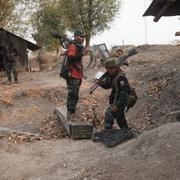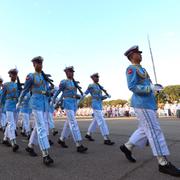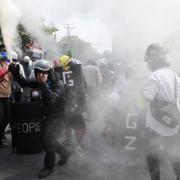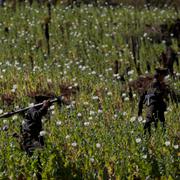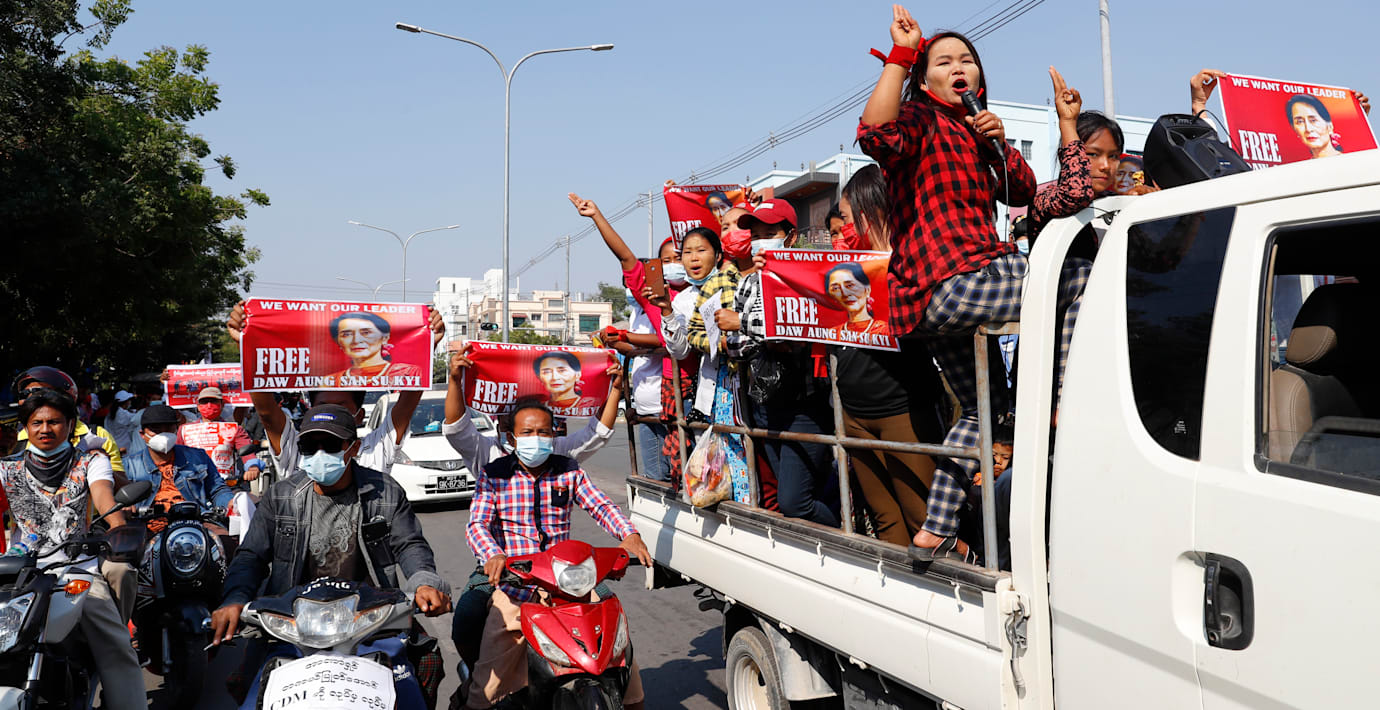
G7 fördömer kuppen i Myanmar: ”Oacceptabelt”
Våldet mot demonstranterna i Myanmar är oacceptabelt och de som utför illdåden måste ställas till svars. Det säger G7-ländernas utrikesministrar i ett gemensamt uttalande under tisdagen, enligt Reuters.
”Vi fördömer hot och förtryck mot de som motsätter sig kuppen. Vi förblir enade i vårt fördömande av kuppen i Myanmar”.
G7-ledarna skriver även att de vill se ett omedelbart frisläppande av Aung San Suu Kyi och president Win Myint.
1 februari tog militären kontrollen över makten i Myanmar och Aung San Suu Kyi och flera andra politiska ledare frihetsberövades.
Tidigare
bakgrund
Myanmars militära historia
Wikipedia (en)
The military history of Myanmar (Burma) spans over a millennium, and is one of the main factors that have shaped the history of the country, and to a lesser degree, the history of Southeast Asia. At various times in history, successive Burmese kingdoms were also involved in warfare against their neighbouring states in the surrounding regions of modern Burmese borders—from Bengal, Manipur and Assam in the west, to Yunnan (the southern China) in the northeast, to Laos and Siam in the east and southeast.
The Royal Burmese Army was a major Southeast Asian armed force between the 11th and 13th centuries and between 16th and 19th centuries. It was the premier military force in the 16th century when the Toungoo Dynasty built the largest empire in the history of Southeast Asia. The centuries-long warfare between Burma and Siam (1547–1855) shaped not only the history of both countries but also that of mainland Southeast Asia. In the 18th and early 19th centuries, highly militaristic Konbaung kings had built the largest empire in mainland Southeast Asia until they ran into the British in present-day northeast India. Prior to the three Anglo-Burmese wars (1824–1885), previous existential threats to the country had come from China in the form of Mongol invasions (1277–1301) and Manchu invasions (1765–1769).
The country was a major battle front in the Southeast Asian theatre of World War II. Since independence in 1948, the country's various political and ethnic factions have been locked in one of the longest civil wars today, with myriad insurgencies receiving implicit and explicit help from various external states.
Omni är politiskt obundna och oberoende. Vi strävar efter att ge fler perspektiv på nyheterna. Har du frågor eller synpunkter kring vår rapportering? Kontakta redaktionen
